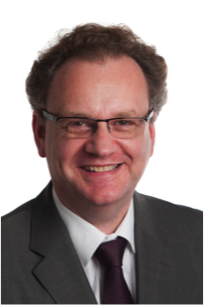Prestigious Professor of Chemistry to Visit UON
Thomas Maschmeyer, who received his PhD from UON in 1994, will present "From Single-Sites to nanostructured Ensembles, Designing Tools for High Precision Chemical Transformations".
ABSTRACT
One of the most fascinating aspects of catalysis is the possibility to accelerate reactions selectively by the judicious choice of the reactive-site environment.
Heterogeneous single-site catalysts combine the elegance of rationally engineered sites with the advantages inherent in heterogeneous catalysis.
The new catalytic systems, based on single-site principles, that will be discussed here include:
- An ab-initio designed non-nobel metal germanate catalyst for the highly selective (100% within exp. error) decomposition of formic acid into hydrogen and carbon dioxide. Such a catalytic system could work to supply hydrogen to fuel cells from a liquid source.
- A new non-metal photocatalysts for water splitting, using modified carbon nitride and doped graphene co-catalysts, pointing towards exciting possibilities and new pathways in photocatalysis.
- Ensembles of ionic liquids working co-operatively to accelerate nucleophilic substitutions, explaining some of the unusual reactivities observed in ionic liquids, and finally
- An example showcasing the possibility of amorphous alloy nanoparticle characterisation in three-dimensions with atomic resolution, i.e. single-crystal-like structural information from an amorphous material.
Laboratory of Advanced Catalysis for Sustainability, School of Chemistry
The University of Sydney, NSW 2006, Australia.
Biography
 Thomas Maschmeyer is Professor of Chemistry. After obtaining a PhD at this University in 1994, he joined Prof. Sir John M. Thomas at the Royal Institution of Great Britain as Australian Bicentennial Fellow and became Assistant Director of the Davy Faraday Laboratories there in 1997, concurrently holding
a Senior Research Associate position at The University of Cambridge and Peterhouse. In 1998 he was appointed to Professor and Head of the Department of Applied Organic and Catalytic Chemistry at the Delft Institute of Chemical Technology, becoming Vice-Chairman of that Institute in 2000. In late 2003
he returned to Sydney as Federation Fellow.
Thomas Maschmeyer is Professor of Chemistry. After obtaining a PhD at this University in 1994, he joined Prof. Sir John M. Thomas at the Royal Institution of Great Britain as Australian Bicentennial Fellow and became Assistant Director of the Davy Faraday Laboratories there in 1997, concurrently holding
a Senior Research Associate position at The University of Cambridge and Peterhouse. In 1998 he was appointed to Professor and Head of the Department of Applied Organic and Catalytic Chemistry at the Delft Institute of Chemical Technology, becoming Vice-Chairman of that Institute in 2000. In late 2003
he returned to Sydney as Federation Fellow.
He was elected Foreign Member of the Academia Europea (2011) as well as Fellow of the Royal Society of NSW (2013, Australia's oldest scientific society), Fellow of the Australian Academy of Sciences (2011), the Australian Academy of Technological Sciences and Engineering (2011) and the Royal Australian Chemical Institute, RACI (2011). He has an H-Index of 44 and published more than 260+ refereed items (SciFinder), including 24 patents/patent applications and 22 book chapters. He is on the panel of nine international journals.
His recent awards and prizes include: New South Wales Science and Engineering Award for Renewable Energy Innovation (2013); RACI Weickhardt Medal (2012) – for Economic Contributions Through Chemistry; Liversidge Lecture and Prize (2012) Royal Society of NSW; RACI Applied Research Award (2011); Australian Academy of Science, Le Fèvre Memorial Prize (2007) – for outstanding basic research in chemistry by a scientist under 40.
The University of Newcastle acknowledges the traditional custodians of the lands within our footprint areas: Awabakal, Darkinjung, Biripai, Worimi, Wonnarua, and Eora Nations. We also pay respect to the wisdom of our Elders past and present.